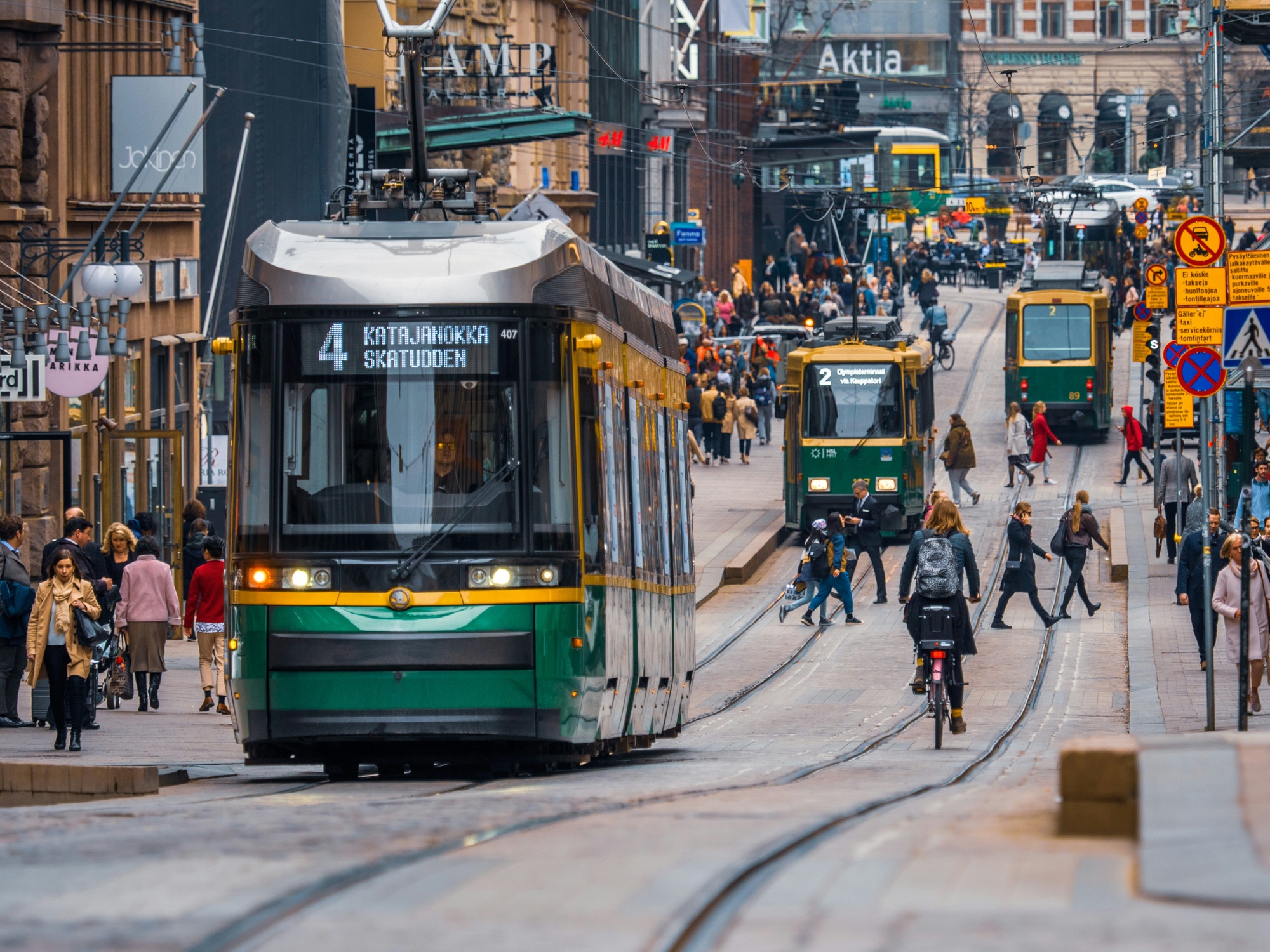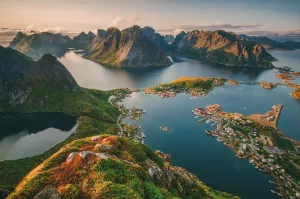Finland, often referred to as the “Land of a Thousand Lakes,” is a stunning destination for nature lovers and cultural enthusiasts alike. Known for its pristine wilderness, innovative cities, and the magical Northern Lights, Finland offers an array of unique experiences. From the vibrant capital of Helsinki to the remote beauty of Lapland, Finland is a land of contrasts. Before you embark on your adventure, here are 17 important things Americans should know before traveling to Finland.
1. Saunas Are a Way of Life
Saunas are an integral part of Finnish culture, with over 2 million saunas in a country of 5.5 million people. Almost every home, hotel, and even some office buildings have saunas. For Finns, saunas are not just a way to relax but a part of their lifestyle, used for unwinding, socializing, and even business meetings.
It’s customary to enjoy a sauna naked, but this can vary depending on the situation. In public saunas, men and women typically have separate facilities, but mixed saunas do exist, especially in private settings. If you’re invited to a Finnish sauna, accept the offer and enjoy the experience—it’s a unique opportunity to connect with Finnish culture.
2. Finland Is the Land of the Midnight Sun and Polar Nights
If you visit Finland during the summer, especially in Lapland, you’ll experience the Midnight Sun, where the sun never fully sets. In the far north, the sun stays above the horizon for weeks, creating endless daylight. On the other hand, in winter, the opposite occurs, with the Polar Night, where darkness dominates the day, especially in northern Finland.
While these extremes can be disorienting, they offer incredible opportunities for unique experiences, such as hiking at midnight in the summer or chasing the Northern Lights in the dark winter months.
3. Finland Is One of the Safest Countries in the World
Finland consistently ranks as one of the safest countries in the world, with low crime rates and a strong sense of social equality. You’ll feel safe walking around cities, even late at night. The country’s safety and security extend to rural areas, making it a great destination for solo travelers or families.
While it’s always important to stay aware of your surroundings, you can generally explore Finland with peace of mind, knowing that it’s a very safe place to travel.
4. The Finns Are Known for Their Love of Nature
Finns have a deep connection with nature, and much of the country’s identity revolves around its vast forests, lakes, and archipelagos. Allemansrätten, or Everyman’s Right, gives everyone the freedom to roam freely in nature, even on private land, as long as they respect the environment. This allows visitors to hike, camp, and forage for berries or mushrooms in most outdoor areas.
Finland’s national parks, such as Nuuksio, Koli, and Oulanka, offer excellent opportunities for hiking, camping, and wildlife viewing. Whether you’re an outdoor enthusiast or just enjoy scenic views, Finland’s nature will not disappoint.
5. Tipping Is Not Common in Finland
Tipping is not a customary practice in Finland. Service charges are generally included in the price at restaurants, and additional tips are not expected. If you feel like tipping for exceptional service, it’s fine to round up the bill or leave a small amount, but it’s not necessary.
This no-tipping culture extends to most services, including taxis, cafes, and hotels. It’s one less thing to worry about when budgeting for your trip.
6. Finns Are Quiet and Reserved
Finns are known for being quiet and reserved, especially in public. While they are friendly and helpful, they tend not to engage in small talk or unnecessary conversation. Don’t be surprised if public spaces like buses or trams are relatively silent, and people keep to themselves.
This cultural trait shouldn’t be mistaken for rudeness—Finns simply value their personal space and privacy. Once you engage in conversation, they can be warm and welcoming, but they appreciate a more low-key approach to social interactions.
7. English Is Widely Spoken
Although Finnish and Swedish are the official languages of Finland, English is widely spoken, especially in urban areas and among younger generations. You’ll find that most Finns speak fluent English, and many signs and menus are available in English, particularly in major cities like Helsinki, Turku, and Tampere.
While it’s not necessary to learn Finnish for your trip, it’s always appreciated if you try a few phrases like “Kiitos” (Thank you) or “Hei” (Hello) to connect with locals.
8. Finland Is a Cashless Society
Like many Scandinavian countries, Finland is largely a cashless society. Credit and debit cards are accepted almost everywhere, even for small purchases like a coffee or bus fare. Many Finns use mobile payment apps like MobilePay for everyday transactions.
While it’s a good idea to carry some cash for emergencies, you can expect to pay with your card for most things. ATMs are available in cities, but they are becoming less common in rural areas.
9. Public Transportation Is Efficient and Clean
Finland’s public transportation system is excellent, especially in urban areas like Helsinki. The trams, buses, trains, and ferries are reliable, clean, and easy to navigate. The Helsinki Card is a convenient option for tourists, offering unlimited travel on public transportation and discounts at popular attractions.
For longer trips, Finland’s VR trains connect major cities like Helsinki, Tampere, Turku, and Rovaniemi. The trains are comfortable and scenic, especially if you’re traveling through the Finnish countryside or toward Lapland. Booking in advance can often secure better prices, especially for longer journeys.
Ferries are also widely used for travel to nearby islands, particularly in the Archipelago Sea or for international trips to Sweden and Estonia.
10. Finnish Winters Are Cold but Magical
If you’re visiting Finland in the winter, be prepared for extremely cold temperatures, particularly in the northern regions. In Lapland, temperatures can drop as low as -30°C (-22°F), and the days are short due to the long winter nights. Despite the harsh conditions, Finland’s winter offers magical experiences, such as seeing the Northern Lights, snowmobiling, dog sledding, and visiting Santa Claus Village in Rovaniemi.
Make sure to pack thermal layers, waterproof boots, and a good quality winter jacket. The Finns are well-accustomed to the cold and have plenty of cozy accommodations and warm saunas to help you stay comfortable.
11. The Midnight Sun in Summer
In contrast to the long, dark winters, summer in Finland, especially in the north, brings the Midnight Sun. In Lapland, the sun doesn’t set for several weeks, and in other parts of the country, the days are incredibly long. This creates a surreal experience of endless daylight, perfect for enjoying outdoor activities like hiking, kayaking, or attending a Midsummer Festival.
If you’re not used to such long days, consider bringing an eye mask to help you sleep, as the light can disrupt your normal sleep cycle.
12. Finnish Food Is Hearty and Local
Finnish cuisine is rooted in local ingredients, often inspired by the natural environment. Fish plays a major role in Finnish meals, especially salmon, perch, and herring. Game meat like reindeer and moose is also common, particularly in Lapland. Traditional dishes include karjalanpiirakka (Karelian pasty), kalakukko (fish pie), and lohikeitto (salmon soup).
Finnish food tends to be hearty and simple, with an emphasis on fresh, local ingredients. Finland is also famous for its bakeries and pastries, such as the cinnamon roll (korvapuusti), which is often enjoyed with coffee during kahvitauko (coffee break).
13. Moomins and Finnish Design
If you visit Finland, you will undoubtedly encounter the Moomins, beloved cartoon characters created by Tove Jansson. These hippo-like creatures are a significant part of Finnish culture, and you’ll find Moomin-themed merchandise, cafes, and even a Moomin Museum in Tampere. The Moomins are part of Finland’s rich literary and design heritage.
Speaking of design, Finland is famous for its modern design and architecture. Brands like Marimekko, known for bold patterns and textiles, and Iittala, known for its glassware, are globally recognized. If you’re interested in Finnish design, a visit to the Design District in Helsinki is a must.
14. Allemansrätten: The Right to Roam
Similar to its Scandinavian neighbors, Finland has Allemansrätten, or the Right to Roam. This law allows everyone to freely enjoy nature, including hiking, camping, picking berries, and foraging mushrooms, even on private land, as long as you do so responsibly and without disturbing others or damaging the environment.
This law makes Finland a paradise for outdoor enthusiasts. You can explore the country’s forests, lakes, and islands with minimal restrictions, provided you follow the basic principles of Leave No Trace.
15. The Northern Lights Are Best Seen in Winter
One of the main attractions for travelers to Finland in the winter is the chance to witness the Northern Lights (Aurora Borealis). The best time to see the lights is between September and April, with clear, dark skies providing the ideal conditions. Lapland, particularly around Rovaniemi and Ivalo, is one of the best places to view this natural wonder.
Many hotels in Lapland offer aurora wake-up services, ensuring you don’t miss the lights if they appear during the night. You can also join guided tours to chase the Northern Lights in remote areas, away from light pollution.
16. Finns Are Proud of Their Education System
Finland is renowned for having one of the best education systems in the world. The Finnish approach to education emphasizes equality, creativity, and critical thinking. While this might not directly impact your travel experience, it’s worth noting that Finns are well-educated and proud of their system. You might hear locals discussing the benefits of their education system or how it has shaped modern Finnish society.
Many Finns also speak multiple languages, including Finnish, Swedish, and English, which is a reflection of the country’s robust education system.
17. Sustainability and Eco-Friendly Practices Are Important
Finland is deeply committed to sustainability and environmental protection. The country is known for its clean energy, recycling programs, and sustainable tourism practices. Finns are environmentally conscious, and this is evident in everyday life, from their use of renewable energy to eco-friendly packaging in stores.
Visitors are encouraged to be mindful of their environmental impact while traveling. This includes respecting nature, recycling whenever possible, and supporting businesses that prioritize sustainability. Finland’s pristine landscapes are a source of national pride, and locals take great care to ensure they remain unspoiled.
Conclusion
Finland offers travelers a unique blend of stunning natural beauty, modern design, and rich cultural traditions. Whether you’re exploring the wilds of Lapland, enjoying a coffee and pastry during fika, or relaxing in a traditional sauna, Finland provides an unforgettable experience. By understanding the local customs, embracing the country’s love for nature, and preparing for Finland’s extreme seasons, you’ll be well-equipped to enjoy everything this beautiful country has to offer.




